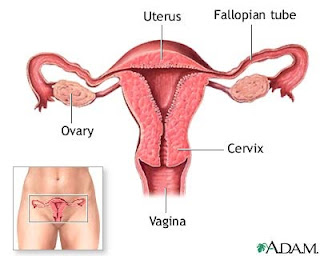Welcome to the third step in curing your vaginismus. Believe me you have come a long way and are already more than half way through.
The previous steps were:
Step 1: Finding Cause Of Your Vaginismus
Step 2: Know Your Anatomy
Now we are ready to start the physical aspect of our efforts to cure vaginismus. Let's begin.
2. There are two basic variations for these kegel exercises that you need to practice. Do at least 2 rounds of both these variations for 10 repetitions each.
Practice kegels daily. They will not only tone and strengthen your PC muscles, but they will give you a better control over your PC muscles. In the beginning, you might tire out quickly, but as with any exercise, it will take time for you to perform them easily. Start with at leatst 2 sets of each variation daily. Build up to as many as you can do so easily.
The best thing about kegels is you can do it while standing up, sitting down or even lying down without anyone knowing. So it is fairly easy to get into a proper kegel routine.
For more information: How to perform kegel exercises.
There are many benefits of doing kegel, some of which are shown in the diagram below. However, our scope is limited only to using this technique for curing our vaginismus.
Next Step: Putting Your Kegels To Use
The previous steps were:
Step 1: Finding Cause Of Your Vaginismus
Step 2: Know Your Anatomy
Now we are ready to start the physical aspect of our efforts to cure vaginismus. Let's begin.
Controlling PC Muscles
If you remember the definition of vaginismus, it is the involuntary muscle spasm that "shuts off" the opening to the vagina, making any form of penetration impossible at the worst. By doing kegel exercises, we will attempt to reprogram these PC muscles in order to keep them from shutting off the vaginal opening and making penetration smooth.Activity # 3:
In this step we will practice kegels on a regular basis in order to overcome the involuntary spasms of the PC muscles.What Are Kegels
Pelvic floor exercise, also known as Kegel exercise, consists of repeatedly contracting and relaxing the muscles that form part of the pelvic floor, now sometimes colloquially referred to as the "Kegel muscles". [wikipedia]How to Perform Kegel
1. We will start by locating PC muscles. Come into a sitting or squat position and tighten your pelvic muscles as you would do while holding your pee. Hold for a few seconds then release. Do this repeatedly until you get the hang of it. After several attempts you will be able to recognize the muscles that you control to hold and release your pee. These are the PC muscles we were trying to locate.2. There are two basic variations for these kegel exercises that you need to practice. Do at least 2 rounds of both these variations for 10 repetitions each.
- Tighten your PC muscles for 3 seconds then release. After 3 seconds, tighten them again for 3 seconds. Repeat this at least 10 times.
- Tighten and release your PC muscles as fast as you can for upto 10 times in a go. Repeat.
Practice kegels daily. They will not only tone and strengthen your PC muscles, but they will give you a better control over your PC muscles. In the beginning, you might tire out quickly, but as with any exercise, it will take time for you to perform them easily. Start with at leatst 2 sets of each variation daily. Build up to as many as you can do so easily.
The best thing about kegels is you can do it while standing up, sitting down or even lying down without anyone knowing. So it is fairly easy to get into a proper kegel routine.
For more information: How to perform kegel exercises.
There are many benefits of doing kegel, some of which are shown in the diagram below. However, our scope is limited only to using this technique for curing our vaginismus.
 |
| Benefits of Kegel Exercises source |
Activity Outcome:
By the end of this activity, your PC muscles will have strengthened and you will have gained a better control over your pelvic muscles.Next Step: Putting Your Kegels To Use

